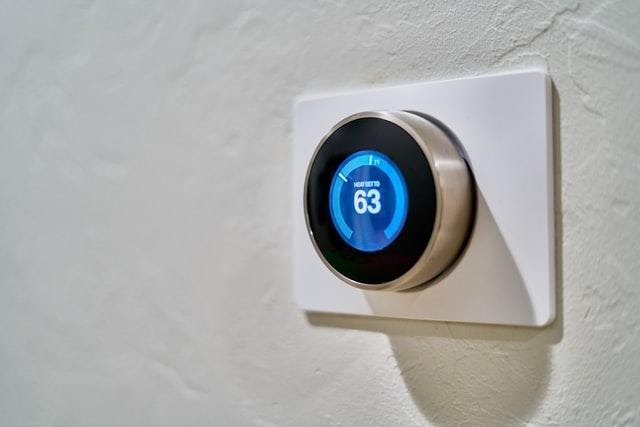Fiber Optic Cable – What Is It And How Can You Make Use Of It?
Fiber optics is one of the most exciting technologies in the world right now. Even though it’s been around for almost a century, it’s only recently that it’s gone mainstream. It’s primarily been used in the telecommunications industry to facilitate long-distance communication. Fiber optics is now being used for a lot more than that. It can be used in a wide range of different industries to make them more productive, efficient and cost-effective.
Here’s everything you should know about fiber optics.
What is fiber optics?
Fiber optics is a technology that uses optical fibers to transmit data or power from one place to another. The optical fibers are typically made of glass or plastic and can be transparent, white or translucent. The information is transmitted through the fibers by sending light pulses through them at very high speeds. The light travels through the optical fibers at around 13.5 million miles per second. Any information sent through them is given a digital code and received by the other end with the same code. Fiber optics can be used to transmit information at very high speeds because light travels through them at a much higher speed than through other types of transmission media. This results in very little degradation of light during transmission.
How does fiber optics work?
Fiber optics works by shining a light source like a laser through a piece of optical fiber. The fiber is made of multiple smaller fibers that are bundled together. The laser light is sent down the optical fiber to another piece of optical fiber. This optical fiber is then connected to another person or device that is the receiver. The optical fiber that is carrying the laser light is connected to a receiver. This receiver is usually a multiplexer that can split the laser light to multiple receivers. The laser light is split into multiple beams that are then sent to the receivers.
Once the light is received by the receivers, the signals are converted back into light. The optical fiber is transparent to the light and it is then converted back into the original laser light. The optical fiber is then capable of transmitting information at a very fast rate.
How is fiber optics used?
Fiber optics is used for transmitting data in ways that are too difficult with other types of transmission media. Optical fibers are not only used for transmitting data but also for receiving it. Optical fiber is used for transmitting and receiving data in a wide variety of sectors like telecom, data centers, cable networks, computer networks and government. Optical fiber is also being used in a wide range of industries like the automotive, aerospace, energy, oil and gas, medical, construction, engineering and marine industries. Optical fiber is also being used in IoT ecosystems.
Optical fiber is used in data centers to transmit computer data. It is being used to transmit large amounts of data that can’t be transmitted through other means like power lines, copper wire or wireless communication. Optical fiber is also being used in cable networks. It is being used to transmit the data and electrical power in the same network. In the telecom sector, optical fiber is used to transmit voice and data.
Types of Fiber Optic Cables
There are two main types of fiber optic cables – single mode and multi-mode. Single mode fiber optic cables are used for long distances and are capable of transmitting 1 billion bits of information per second at a wavelength of 850 nm. Multi-mode fiber optic cables are used for shorter distances and are capable of transmitting 1,500 to 2,000 bits of information per second at a wavelength of 1300 nm. Other fiber optic cable types include single-fiber, single-mode, multimode and multi-fiber.
Advantages of Fiber Optics
– Very Long Distance: Optical fiber is capable of transmitting data at distances of up to 2,000 miles. And, you can also expect it to continue transmitting data even at that distance. This is because it is not susceptible to electromagnetic interference.
– No EMI: Optical fiber is virtually free of electromagnetic interference. That means that you can use it in places with high levels of electromagnetic interference.
– Excellent Security: Optical fiber has excellent security features. That means that you don’t have to worry about security breaches when you use it.
– High Speed: Optical fiber is capable of transmitting data at a very high speed.
– No Frequency Issues: Optical fiber has no frequency issues. That means that you can use it in any frequency.
Disadvantages of Fiber Optics
– Expensive: Optic fiber is expensive. That makes it a costly technology. If you use it in a large scale, it can become a real problem for companies that have to invest a lot of money to use it.
– No Protection Against Damage: Optical fiber is not protected against damage. That means that it can be broken or damaged during transmission.
– Limited Availability: Optical fiber is not readily available in many places like rural areas or islands. That makes it difficult for companies to use it.
– Variable Wavelength: Optical fiber has varying wavelengths. That means that it doesn’t transmit data consistently.
Conclusion
Fiber optics is an extremely useful piece of technology. It’s capable of transmitting data at a great distance, with no electromagnetic interference and at a very high speed. This makes it a very useful technology for many businesses. Fiber optics is also useful because it is not affected by the frequency or wavelength issues that can occur with other forms of transmission. And, it’s also capable of transmitting data consistently.



